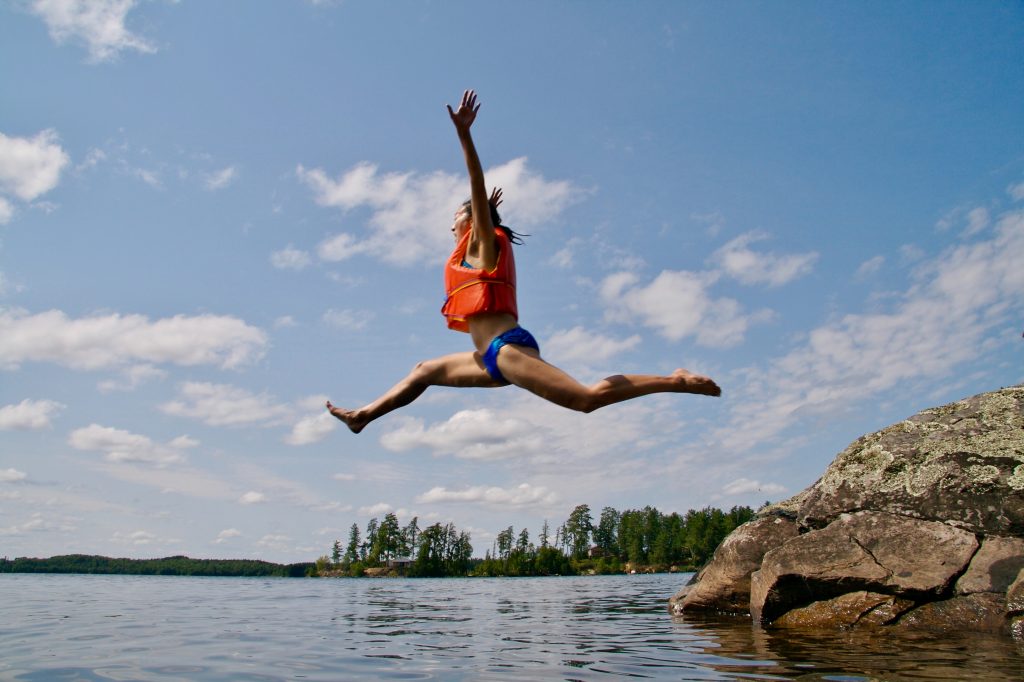Many people are taking to Muskoka lakes and rivers as high temperatures continue across the region, and the Lifesaving Society wants to remind Canadians of the ways they can prevent drownings and keep the summer fun from turning to tragedy.
Held in the third week of July, National Drowning Prevention Week is an annual campaign by the Lifesaving Society, a charity that aims to increase public education surrounding water safety and drowning prevention. Barbara Byers, public education director and research director for Lifesaving Society Ontario, said it’s important to consider safety measures amid the summer excitement, whether you’re in a boat, at the beach or simply in a backyard pool. Byers wants Canadians to understand how common drownings are, with around 400 drowning deaths occurring across the country each year and about 150 to 160 of those deaths happening in Ontario.
“Almost all of those drownings are preventable,” Byers said. “Drowning is the second leading cause of preventable death for children under the age of 10, after automobile collisions, and the third leading cause for adults, so it is a big issue in Canada.”
Most people who drown in Ontario do so while swimming followed next by boating and then by non-aquatic activities where someone inadvertently falls in the water. About two thirds of all drownings occur in lakes, rivers and ponds and the majority of people who drown are men. It used to be that the primary age group for drowning deaths was 20 to 34, but over time, Byers said they’ve seen a shift, with ages 65 and over having the highest drowning rate, followed by ages 50 to 64.
While different age groups have different risk factors, one thing most drownings have in common is the absence of a life jacket. People often think they can keep their life jacket nearby and forego wearing it “until they need it,” Byers said, but the incidents where drownings occur happen suddenly, leaving little to no opportunity to locate the life jacket, pick it up and put it on before entering the water.
“It’s just a split second situation, so if you don’t have the lifejacket on, you’re not likely to have it once you hit the water, and choosing to dive in the water and having a swim is a whole different experience than being thrown in the water when you don’t expect it,” she said. “In addition to not having your life jacket on, you may go under the water and get a mouth full of water and unfortunately, you could drown very quickly.”
The society recommends that Canadians pick a life jacket and make it part of their routine, just like a seatbelt in the car. For children in particular, it’s essential to make sure they have a government-approved life jacket rather than water wings or other floatation devices that are designed for fun over safety. The society also strongly recommends putting life jackets on kids that don’t know how to swim, even when they’re building sandcastles or doing other activities near the water.
“I know many friends of mine who have cottages had a rule that the children could not leave the deck of the cottage without a life jacket on, even if they’re playing on the swings or playing out in front of the cottage and [don’t] have their bathing suits on,” she said. “It’s so easy for them to be tempted and drawn to the water, so a life jacket should be part of the whole safety plan at a cottage or a campsite as an extra layer of protection.”
Because children have such a “magnetic attraction” to the water, Byers said it’s important that parents control and restrict their children’s access to water and ensure they’re safe when near the water. To that end, it’s essential to maintain a dedicated, 100 per cent focus on any child who’s swimming or playing in a pool or lake. Byers urges parents to put their phones down and wait until everyone is out of the water to shift their focus to other tasks like applying sunscreen or preparing lunch.
“It’s really important to know that drowning is quiet and it’s fast,” Byers said. “A person can drown in 20 seconds and it’s silent, so unlike movies where you may see someone with their arms out in the water saying, ‘Help, I’m drowning, I’m drowning!’, that’s Hollywood, that’s not reality, and when a person is in a drowning situation, their airway fills with water, which means they can’t speak.”
While there are many steps parents can take to help their children stay safe, one of the most valuable things parents can do is enroll their kids in swimming lessons. Moreover, Byers strongly encourages all Canadians to learn how to swim. It’s never too late to learn, and being able to swim could mean the difference between a leisurely summer day and the loss of a life.
“Learning to swim is a key strategy to preventing drowning and it kind of acts as an immunization or a vaccine against drowning,” Byers said. “It’s not a guarantee that you won’t drown, but if you are a strong swimmer and if your children are strong swimmers, it gives them an added advantage to be safe around the water.”
For more information about water safety and drowning prevention, visit the Lifesaving Society and Lifesaving Society Ontario online. To learn more about boating safety, visit the STARTboating website.
